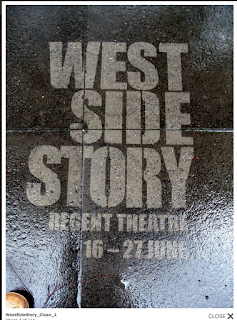-Screen Prints. Screen Printing allows designers to mix their own colours on a pallet much like a painter before screen printing very technical images. It also opens up a new range of textures and an individual, handmade feel to every poster that is produced. The process usually results in a limited colour pallet however as a result the designer can often be forced in finding more interesting ways to communicate using composition and layout instead. Screen prints are often designed on a computer or hand drawn and cutout.
-Digital. Any screen based graphics. Probably now the most popular way of producing and viewing graphic design. With a wide range of reproducible colours and interactive, moving image, 3d, ect, digital design has been the biggest revolution in graphics ever.
-Hand Drawn Graphics. Creating Design purely by hand drawn line is not very common, unless you are in a development stage of a brief. However hand draw graphics are increasingly popular and will often be reproduced many times by screen print or digital printing methods. Hand drawn design usually has a friendly feel to it and it is used by many to connect to an audience on a personal level, by charities for example. Or by designers to raise awareness of there blogs in a positive rather than the cold light of the digital.
-Clean Advertising. Started as reverse graffiti as a way for graffiti artists to tag streets without actually breaking any laws whatsoever. By cleaning grime off of urban spaces the negative space of a stencil creates the 'artwork'. Recently the advertising sector has become interested in this method because it says 'modern, clean, environmental, cool' and has undertones of illegal street art also.
-Nature. Using the natural world as a canvas has seen a resurrection in recent years, as it represents an environmentally friendly future which is a popular theme for commercial success due to the arguments of environmentalism.







No comments:
Post a Comment